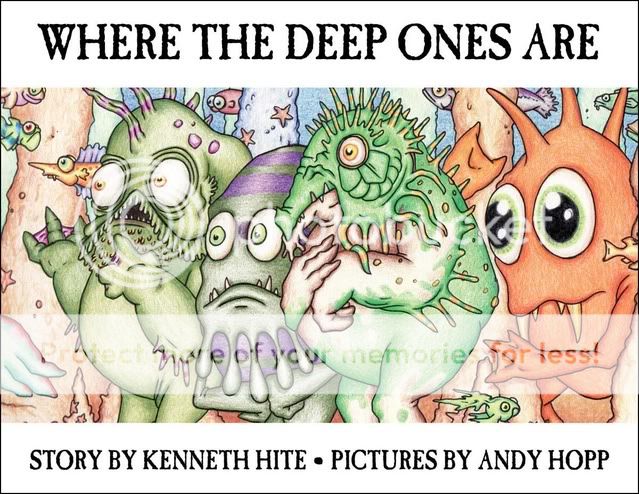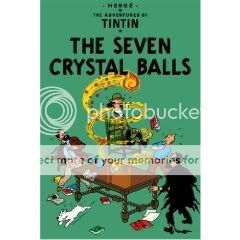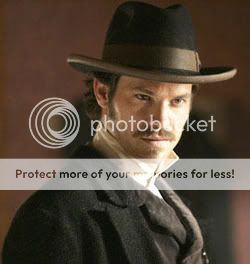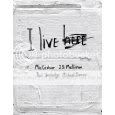Originally written on December 20, 2006 for publication in The Comics Journal
37 for ’06
The following three dozen or so writers/artists/cartoonists/editors collectively created my favorite comics of the year. (NB: Since the Journal‘s deadline for Best Ofs was before the Christmas break–my prime time for cramming in all the books I hadn’t gotten around to over the rest of the year–please interpret any embarrassing omissions on my part as “stuff I missed” rather than “stuff I didn’t like.” For the most part.)
Brian K. Vaughan: In a better world, Vaughan’s ultra-professional scripting and deft balance between engaging soap operatics, sly and non-didactic socio-political exploration and faultless superhero action in titles such as Ex Machina, Doctor Strange: The Oath and (especially) Runaways would be the standard below which any other writers would be laughed out of the “mainstream.” If you can’t be at least this good–and thanks in part to his astute taste in artistic collaborators, including Tony Harris, Marcos Martin and Adrian Alphona–you really should do us a favor and just stop.
Christos Gage: Re: Union Jack and StormWatch: P.H.D.–congratulations, Mr. Gage. You have met the Vaughan Standard.
Ed Brubaker: Despite some well-intentioned but dishwater-dull franchise resuscitation attempts like X-Men: Deadly Genesis and Uncanny X-Men, The Man Who Would Be Bendis became a bona fide Name this year in superhero circles due to a pair of books in which it seems like he can do no wrong. The first is Daredevil, a title he inherited from his Bendis only to take it away from his superstar friend’s obsessions with dialogue and identity and move it even further into the realm of noir; if it weren’t for the fact that it stars an acrobat, you could easily hear Robert Mitchum’s voice reading the caption boxes. The second is the even-better Captain America, which is simply the best work anyone has done with the character, ever; an epic battle royale between Brubaker’s talent and the understated craftsmanship of his artists Steve Epting and Mike Perkins in one corner and the seemingly mutually exclusive Cap characterizations of two-fisted WWII patriotic icon, post-9/11 metaphor for Where We Are As A Nation, Steranko-influenced super-spy and Marvel Universe Star-Spangled Avenger superhero in the other. Brubaker wins, easily. (His creator-owned thriller Criminal and his and Matt Fraction’s collaborative updating of The Immortal Iron Fist from the Bruce Lee era to the Quentin Tarantino one are pretty good too.)
Robert Kirkman: The bulk of his corporate character work for Marvel (with the exception of the balls-out insane Marvel Zombies, easily the strangest thing the House of Ideas’ main wing has put out since George W. Bush’s reelection) has been utterly forgettable ’90s nostalgia-mongering. But the writer’s ongoing series for Image, The Walking Dead and Invincible, continue to be the most unpredictable horror and superhero titles in the market respectively, and among the most fun. It helps if you enjoy entirely gratuitous violence, which I do.
Grant Morrison: Is Grant Morrison the best superhero writer ever at this point? He’s certainly better than Moore, most people would say he’s better than Miller, and the Kirby comparison is just too much of an apples/oranges deal. There was certainly no better single superhero comic than All Star Superman #4 this year, that’s for sure; Morrison and artist Frank Quitely, who for all intents and purposes might as well be a homunculus that Morrison conjures from the ether to turn his visions into reality, use the basic building blocks of Bizarro, Doomsday and Jimmy Olsen to create a story that conveys everything appealing about Superman and his mythos, two things that I frankly didn’t think had all that much appealing stuff going for them. Oh, hey, did I say there was no better single superhero comic than All Star Superman #4 this year? I just thought of Seven Soldiers #1 and realized I may have lied. If ever there was a spandex book with a last page that better conveyed that euphoric feeling you get when you hear the last song on your favorite rock record, I haven’t read it. Finally, I can’t help but feel that Morrison is the animating spirit behind the weekly onslaught of High Superhero formal weirdness that is 52, and from what I understand, his fellow writers on the now-boring, now-baffling, now-exhilarating project feel the same.
Kurt Busiek & Geoff Johns and Pete Woods & Renato Guedes: Please read their collected Superman: Up, Up and Away, because it contains the definitive Superman/Lex Luthor moment: Superman and Luthor hurtle through the sky until the point at which Superman’s powers of flight finally give out do to exposure to a Kryptonite super-weapon previously piloted by Lex. At the exact second that the pair freeze in free-fall just before plummeting back toward the Earth, Luthor looks Supes in the face and says “I hate you.” Fan-freaking-tastic. I know I’m not supposed to like anything Johns does, and tough titties, this is the best start-to-finish Superman story I’ve ever read.
Steve McNiven, Dexter Vines and Morry Hollowell: Marvel’s Civil War mega-crossover was an aggressively irritating mess of “sneeze and you’ll knock the whole house of cards down” political allegory and agita-inducing violations of the characters we all know and, well, know. But holy geez, did it look nice. The art nouveau-influenced line of penciller McNiven and inker Vines meets the luminous, warm palette of colorist Hollowell for a look that’s somehow utterly unique in the superhero idiom, yet instantly recognizable as a part thereof. Seriously, just check out how they do hair or armor or thighs. It’s really somethin’.
Frazer Irving: One look at this artist’s pantomime faces, Corben-oval bodies and “no, actually, I think I’m all set, but if I need your advice I’ll ask, thanks” colors on titles like Klarion the Witch-Boy, Iron Man: The Inevitable and Robin is all it will take before you decide that someone at both DC and Marvel’s art departments is sending you a message: “I’m with you.”
Mike Mignola, John Arcudi and Guy Davis: Are this team’s Hellboy spin-off miniseries B.P.R.D.: The Black Flame and B.P.R.D.: The Universal Machine better than actual Hellboy releases? Insofar as they both moved me and scared me more than actual Hellboy releases, yeah, they are.
Paul Pope: His Batman: Year 100 managed to convey the physicality of the act of Batmaning–running up and down stairs, climbing up and down and elevator shafts, leaping from rooftop to rooftop, attacking large groups of armed policemen, getting tortured and shot, wearing masks and boots and longjohns–better than any other Batman comic. (Sorry, Frank, you know I love you but interior monologues about how many ribs he just broke don’t count.) It also gave us a Batman that could conceivably scare the shit out of someone. Pope’s blog also owns.
Becky Cloonan: In my dreams I see Becky Cloonan eloping to Mexico with Paul Pope and returning four years later with a 600-page masterpiece of blobby, sexy inks and high hipster adventure. (Occasionally the role played by Pope, or by Cloonan for that matter, is taken on by Vasilis Lolos.) Here in the real world, unfortunately, Cloonan’s too often saddled with providing illustrations for less-than-masterpieces like Demo and American Virgin, in which Cloonan’s art is used to connote coolness rather than create it. Thank God, then, for her turn as a writer-artist with East Coast Rising, whose giant carnivorous sea turtles appear to indicate that my dreams are slowly leaking into Cloonan’s reality.
Bryan Lee O’Malley: 2006 was the year O’Malley lived up to the hype. (Actually, given the hype that’s pretty much impossible, but you get the idea.) The magpie mash-up “video-game realism” storytelling of his Scott Pilgrim added depth to its breadth in its third volume; in between the awesome bass-guitar combat scenes and references to Super Mario Bros. it portrayed the heartbreak of watching someone you care about choose to become someone who doesn’t care about you in return better than any straightforward slice-of-lifer with no end boss at the climax. It’s a book to get excited about.
Adrian Tomine and Ai Yazawa: From opposite sides the mighty Pacific, these two very different artists prove with each new installment of Nana and Optic Nerve that angular bodies, white spaces, main characters who would be antagonists in most other stories and lines that you can practically feel etch their way across the page can make for the glammiest, sexiest comics around, whether their creators want them to be (probably Yazawa) or not (probably Tomine).
Alvin Buenaventura, Randy Chang, Sammy Harkham, Dan Nadel and Igort: Superheroes have become fodder for big-budget films and television series that seem determined to suck all the crazy right out of them (NBC’s Heroes is sort of like what Lee/Ditko Spider-Man might have been if every issue’s script consisted of repeating “with great power comes great responsibility” for 22 pages, while Bryan Singer’s “Superman Returns” had no, I repeat no, Super-punching). Alt- and Eurocomix have evolved into farm teams for big New York publishers searching the next memoir to feature an intractable foreign-policy issue and/or terminal illness (quick, someone find me a plucky young Muslim woman with cerebral palsy who was persecuted by the Nazis, stat!). So thank God for the men behind Buenaventura Press, Bodega, Avodah Books, PictureBox Inc. and the Ignatz line and their invaluable contribution toward the goal of keeping comics the most idiosyncratic medium on the planet, the Mos Eisley Cantina of art. Between them these guys put out Kramers Ergot 6, Art Out of Time, The Comic Book Holocaust, They Found the Car, Last Cry for Help, Cold Heat, New Tales of Old Palomar, Paper Rad BJ & Da Dogs, Daybreak, Private Stash, Babel–you could basically excise the entire remainder of the industry’s output this year and still come away thinking “wow, comics is incredible.”
Ivan Brunetti, Gary Groth and Eric Reynolds: If a stranger walked up to you and asked, “What do comics that are considered ‘good’ look like?”, responding by handing that stranger the anthologies edited by these guys would more than suffice by way of an answer. You know Gil Kane’s frequently blurbed quote regarding The Comics Journal–“the good is always in conflict with the better”? Groth and Reynolds’s MOME is basically the battleground where that conflict takes place; victorious combatants this year include Jeffrey Brown, who I hope just gets more and more creatively restless, and the brilliant David B., whose short stories blend fantastic fiction and the terror of war better than anything this side of Battlestar Galactica. Meanwhile, an apples-to-apples comparison between Brunetti’s Anthology of Graphic Fiction, Cartoons and True Stories and similar efforts like Harvey Pekar and Anne Elizabeth Moore’s Best American Comics 2006, Chris Ware’s McSweeney’s Vol. 13 or even The New Smithsonian Book of Comic Stories reveals that this is hands down the best anthology of its kind ever. (Seriously, “Gynecology”! “Flies on the Ceiling”! “Love’s Savage Fury”! “Fun Things to Do with Little Girls”! An excerpt from Reidy & Regé’s Boys, for crying out loud!)
Michael Kupperman: Tales Designed to Thrizzle is so funny that you almost forget he drew it, too.
Megan Kelso: This one gets a quote, a line from Owen Wilson’s laid-back male model Hansel in Ben Stiller’s Zoolander: “Sting would be another person who’s a hero. The music he’s created over the years–I don’t really listen to it, but the fact that he’s making it? I respect that.” Kelso’s never really clicked with me; the art feels labored over the way I labor over assignments I don’t want to do when I’ve had too much caffeine, right down to the lettering, which still retains an overcooked feeling left over from her SuPeR CrAzY LeTtErInG days with no Eisnerian form/function mojo in its defense. But her collection The Squirrel Mother is a whole different way of doing comics: Nothing really happens, but not even in the sense that nothing really happens in a Tomine story–they’re about what it feels like for nothing to happen, and how that feeling can itself be something. They’re like the comics version of “There Is a Certain Slant of Light,” and the fact that Kelso’s making them? I respect that.
Renée French: Another quote, this one from Jack Nicholson’s Joker in Tim Burton’s Batman: “The skulls…the bodies…you give it all such a glow–I don’t know if it’s art, but I like it.” The key difference is that in the case of The Ticking, you know damn well what it is. If French’s previous comics established she’d be a great art director, this one showed she could be the screenwriter, D.P. and director, too. And unless you count the things Alison Bechdel’s father does with interior decorating in Fun Home, no other comic this year did a better job of depicting the ways in which making art for a living can be used as a substitute for making sense of your life.
Chris Ware: One more quote, from Mystikal’s “Shake Ya Ass” this time: “Don’t worry about who lookin’, just keep on doin’ what you doin’.” The 17th volume of Acme Novelty Library–not to mention those New Yorker variant covers–continue in much the same vein as the rest of Ware’s exquisitely drawn, confrontationally painful oeuvre, and good for them. Ware’s comics are like if The Office or Curb Your Enthusiasm weren’t primarily comedies, and if you think (as so many people apparently do) that this makes them cold or clinical, I’ll wait while you come up with something more human to chronicle than failure. Jesus, that sequence where “Mr. Ware” tries to get the class to draw motion.
Ron Regé, Jr.: Regé’s post-Skibber Bee Bye career has suffered for its relative lack of ambition; where Skibber made you say “Where the hell did that come from?”, most of his efforts since could be quite easily aesthetically contextualized amid, say, the sorts of albums that made Pitchfork’s Best of 2006. Until The Awake Field, that is, which itself feels like an album, discreet sections blending one into the other for a cumulative effect as powerful as anything I read this year. Finally his uniform line weight provides both the hallucinogenic thrills and all-is-full-of-love thematic resonance he and collaborator Becky Stark have been striving for. After I read it I wanted to call and congratulate them, but not before I read it again.
Anders Nilsen: Nilsen’s work is important because of all the people who are monkeying with words and images in ways that don’t immediately call to mind what we might think of as comics and then say “hey, what is comics if not monkeying with words and images?”, his is the most readable, and the most moving. The odds ‘n’ sods he serves up in MOME are thrillingly far out, Big Questions is already fast-tracked for Best of Whatever Year It’s Collected In and Monologues for the Coming Plague is the proverbial cutting edge. Yet looking at those characters’ too-big heads and too-weak limbs and those drawings’ shy, sorry-to-intrude line and the dominant impression isn’t something artsy, but something sad.
Kevin Huizenga: We’ve all been told that comics can do pretty much anything. Huizenga shows us. (It’s late as I right this and I’m a little worried that I’ll want to roll this assertion back, but only a little. Books like Or Else and Curses and Ganges invite hyperbole. (Well, actually, Ganges didn’t hit me as hard as it did other people–I think he’s done the “spontaneous transcendence emerging from everyday minutiae” thing better in the past, like in the library sequence from Or Else #2. But the bit with the pigeons in OE #4 knocked me on my ass.)) If I had to pick one and only one cartoonist whose comics I’d be allowed to read for the rest of my life, I’m pretty sure he’d be the guy.
Alison Bechdel: A few years back Marvel Comics put out a mature-readers (read: dirty) miniseries about an old Iron Man sidekick called U.S. War Machine. The series followed a squad of black-ops soldiers in high-tech battle armor, and the motto of their unit was “RELENTLESS • INVINCIBLE,” and that same motto came to mind when I read Bechdel’s masterpiece Fun Home for the first of what undoubtedly will be many, many times. Watching Bechdel arrange her autobiography’s many elements (all done with lovely just-so cartooning and sumptuous SAT-word prose) is much like watching her father decorate their home must have been–it’s seeing an act of beautiful, desperate creation. In a year filled to the rafters with deeply pleasurable comics-reading experiences, this was the one most likely to give you lasting memories of the “where were you when you read it the first time?” variety. And aside from Phoebe Gloeckner’s The Diary of a Teenage Girl, it’s the finest comics autobiography I’ve ever read.
















